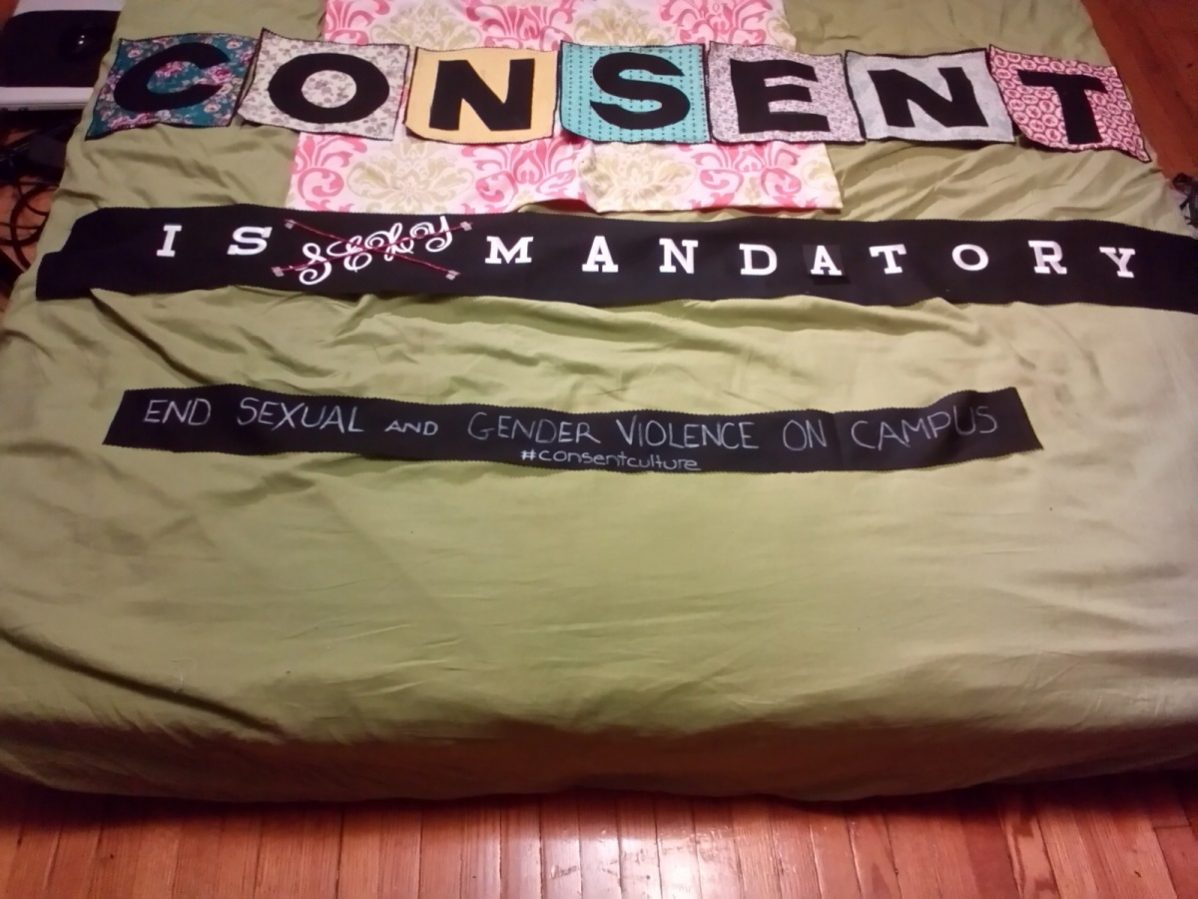Charlene Holmes
Women and trans
students’ support staff
We’ve seen the messages. Consent to any activity means that it is informed, freely given, enthusiastic, and on-going. And sure, consent is sexy. But consent is also more than that, and not just limited to sex. We can practice consent in the classroom, online, and in our everyday lives. Consent strengthens all our relationships. Here are some tips.
Practicing consent with classmates, faculty, and staff helps keep learning environments safe for everyone.
1. Get consent on how and when folks want to be contacted. Consent can mean finding ways of communicating outside of class that work for everyone. For example, with group assignments, ask your group members how they’d like to meet and communicate outside of class. Consent can sound like, “Would you like to exchange phone numbers?” And if not, offer reasonable alternatives, like using school email addresses, or asking your instructor to create a ‘group page’ on Blackboard. You don’t have to be reachable all the time. Ask about boundaries. For example, “Is it okay to call after 8pm?”
2. Get consent when borrowing or touching items.
Anytime we touch something that is not our own, we can practice asking for consent. Consent can sound like, “Can I borrow a pen?” It can also sound like, “Can I look on your laptop?” or, “Can I borrow your phone?”
3. Get consent on group dynamics. Build trust in the classroom. Teachers and students can co-create shared expectations for the classroom. For example, group guidelines can proactively help us listen and participate. Consent can sound like asking and using people’s pronouns.
CONSENT ONLINE – Consider the privacy and safety of others online.
1. Get consent with photos, mentions, and tags. Consent can sound like, “Would you like to take a picture together?” Or asking, “Is it alright if I tag you in this post?”
2. Remember, information that is made public online doesn’t mean we don’t ask for consent. Consent can sound like, “Can I share this?” Or, “Can I credit your post/art?”
3. Accept rejection. Social media allows us to connect (or not) with people we know. Consent can sound like, “Can I follow you on Instagram?” Or, “can I friend you on Facebook?”
CONSENT IN EVERYDAY – Let’s respect each other’s agency.
1. Get consent before any physical or sexual activity. Consent can sounds like, “Can I give you a hug?” Or, “Can I kiss you?” Or, “Can I give you a high-five?” Consent cannot be given by someone who is intoxicated or unconscious or otherwise unresponsive.
2. Safeguard people’s information. Sharing personal details or stories that aren’t our own requires consent. They’re not our stories to tell (or emails to give). When in doubt, ask permission.
3. Set boundaries with your time and space. “No means no” and “yes means yes” are important in healthy relationships. For example, saying “No, I won’t be able to make the movie, but I’m looking forward to having dinner.” You don’t owe anyone anything.
Incorporate these tips to practice consent in class, online, and in our everyday life. When we expand how we understand consent and where it applies – we can build consent culture in all areas of our lives.


